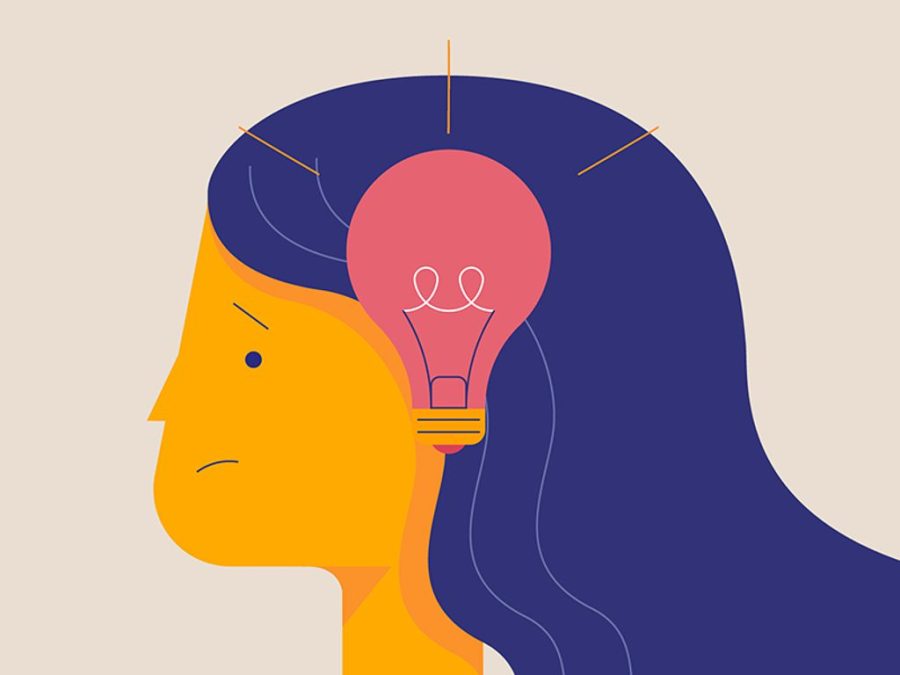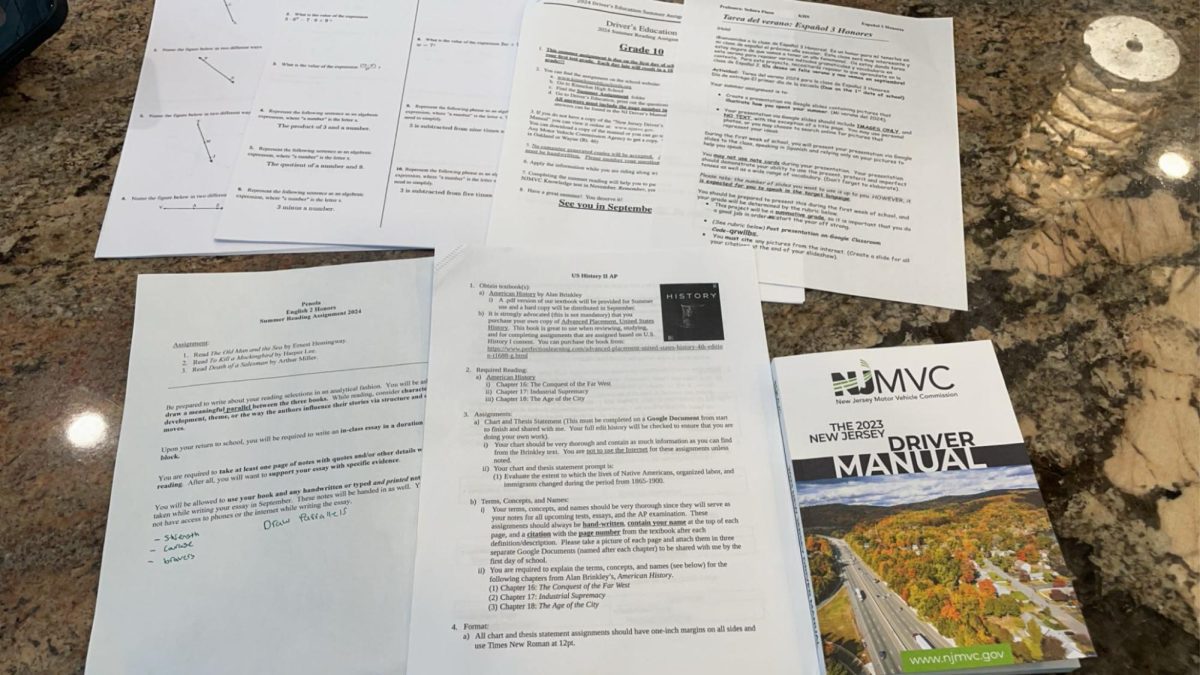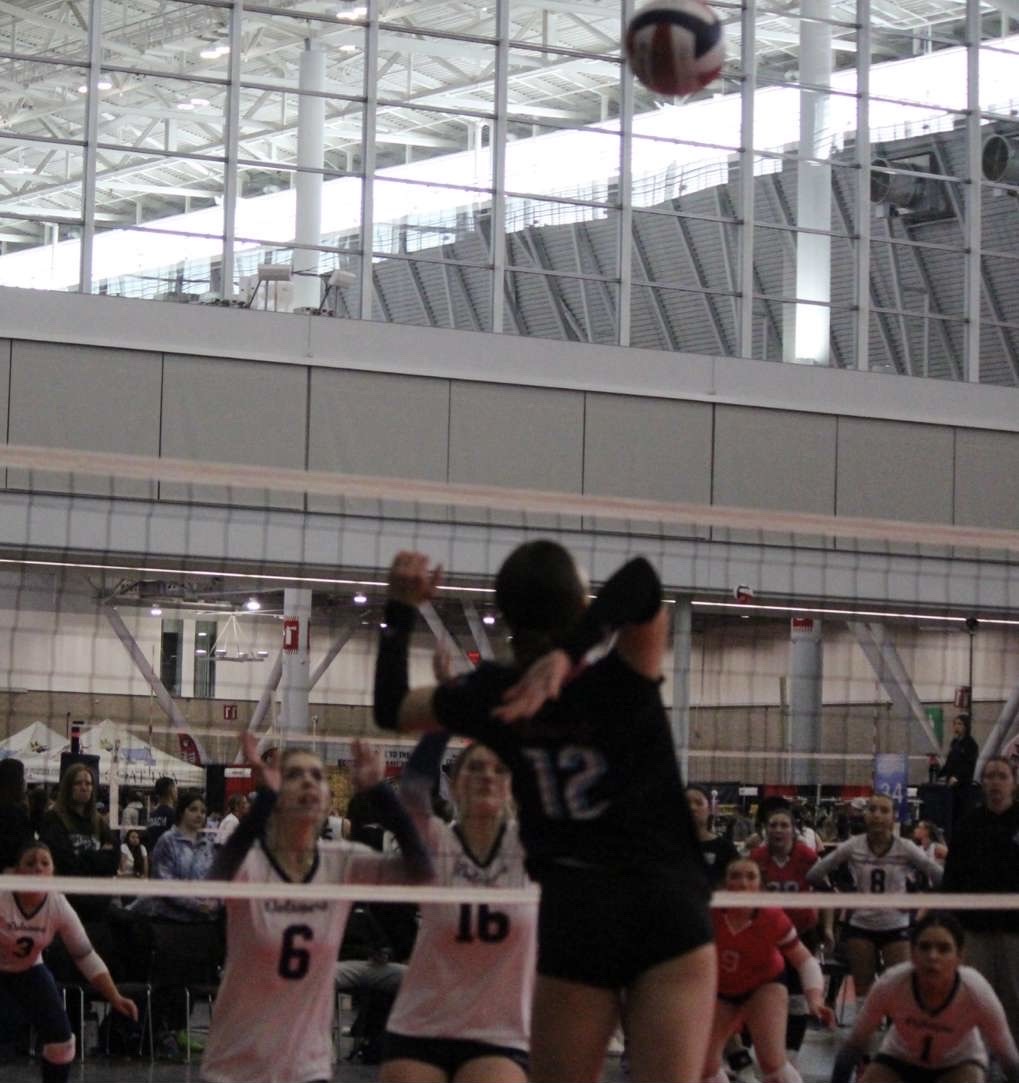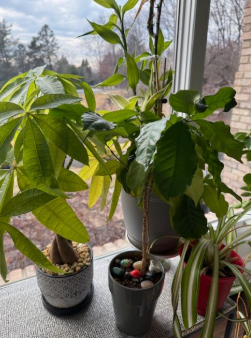Up to 5.5% of teens in the U.S. suffer from Seasonal Affective Disorder for approximately 40% of the year. Many teens have reported feeling lonely and unmotivated, which are symptoms of S.A.D.
Seventy-four percent of KHS students stated that winter is the season they feel most unmotivated, stressed, and tired. Those are symptoms of S.A.D., more commonly known as Seasonal Depression, mainly occurring in the winter, especially in northern states. These symptoms come from fewer daylight hours, freezing temperatures, and the inability to do outdoor activities that usually keep people happy.
Jamie Chavkin is a Little Falls resident who was diagnosed with S.A.D. She states that light therapy helps her the most. “I spend as much time outside as I can and exercise, which is not always my favorite activity. I have a lightbox that I sit in front of that mimics the sun, and that helps as well.” These are a few of the many ways that people can help their S.A.D. symptoms. When a lightbox is turned on, it creates the illusion of natural light, tricking the brain into thinking the sun is up for more hours of the day. Light box therapy can be beneficial to those struggling with S.A.D.
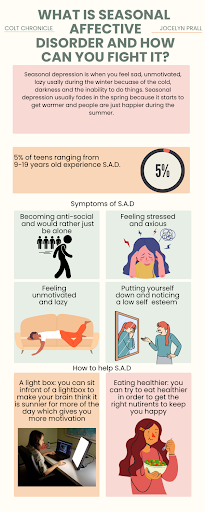
KHS student Aiyana Bula shared that the winter makes her less motivated, affecting her homework performance. To help this, she tries to switch up her environment while doing homework. For example, studying in one room for 30 minutes and then going to another room for 30 minutes to prevent being in one place for too long. Bula states, “It’s hard to wake up when it’s pitch black outside. It is not very fortunate for students as our school starts at 7:30, and most students wake up around 6”.
Although it’s easier to sit around and binge-watch a show or scroll on your phone, going outside can make a difference. “Being outdoors is nature’s antidepressant. It’s true!” says LPC-licensed professional counselor Erika Pilato, who works in Bernardsville.
That does not mean a daily hike will cure S.A.D., but it will help. She continues, “Putting on your coat and going outside for 10 minutes can change your mood and energy levels. Kids’ energy levels drop when they are lacking fresh air.”
Getting fresh air is one simple yet obvious strategy that people often overlook. It’s one of the building blocks of our physiological needs. Pilato adds, “As human beings, we all have basic human needs. We need to eat healthy, we need to drink water, and we need to move our bodies. If those three basic human needs are unmet, you have difficulty coping with whatever life throws at you.” Shortened daylight hours can make winter hard, but eating right, hydrating, and getting outside can impact your feelings.
As Pilato said, eating healthy significantly impacts one’s mood. KHS Freshman Aden Reckler stated that one way he tries to help his Seasonal Depression is by eating healthier to get the vitamins he needs since he can’t get them from the sun. A result of seasonal depression can sometimes be weight gain because people get so lazy that they sit on the couch and eat junk, but it doesn’t have to be that way.
Instead, eating a healthy snack will enhance your diet. He also describes ways to take his mind off it: “I like listening to music, working out, playing hockey, and playing the guitar.” Doing favorable activities will reduce S.A.D. and relieve stress.
Having symptoms of seasonal depression, or a diagnosis, is not a dead end. There are many ways to get help after falling into a hole, but it’s even better to be proactive and not fall in.

